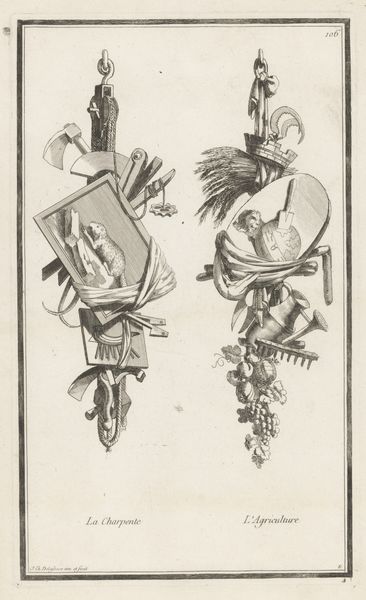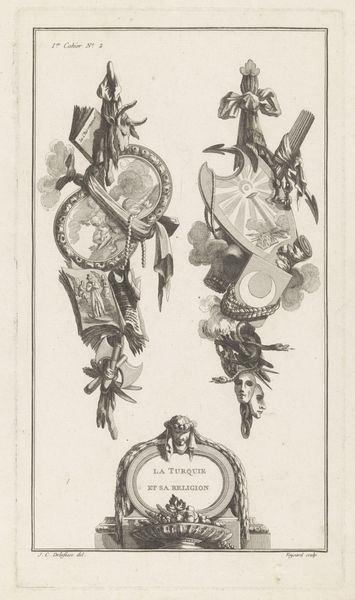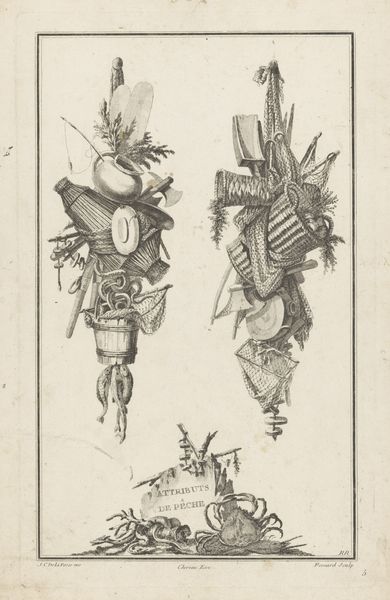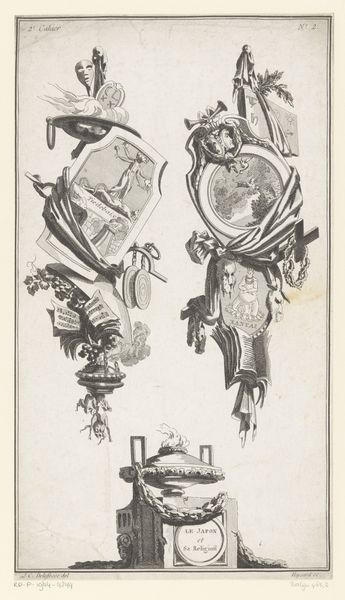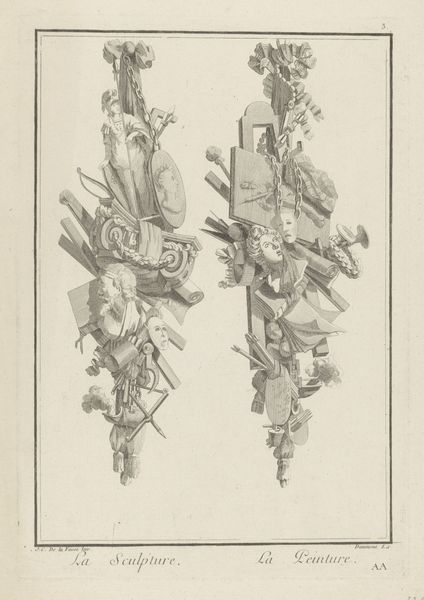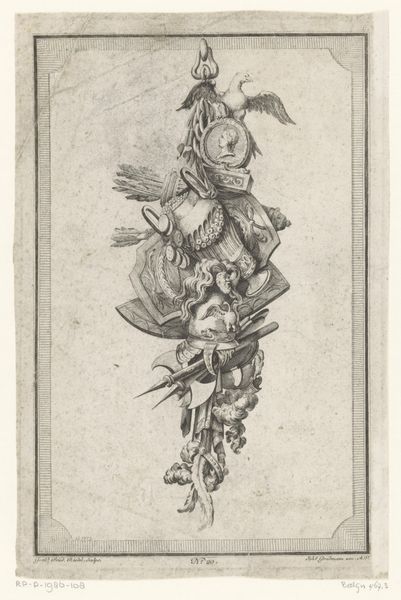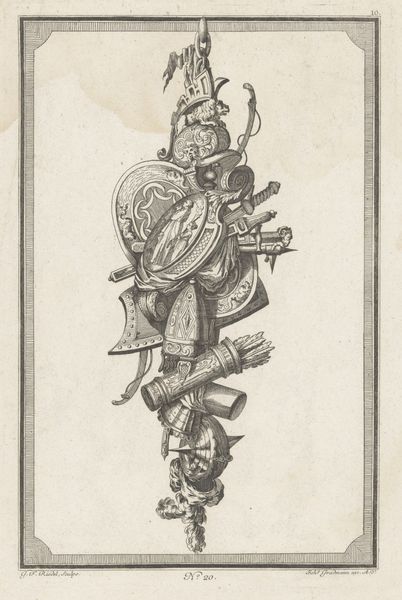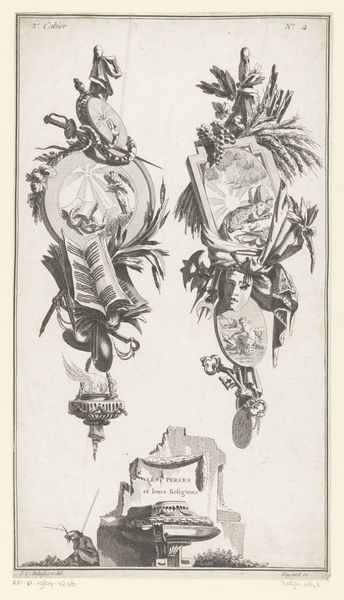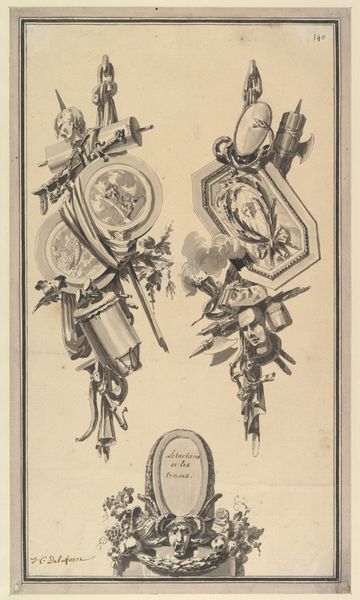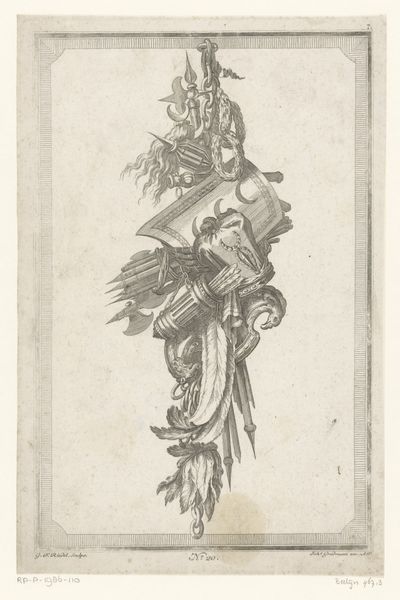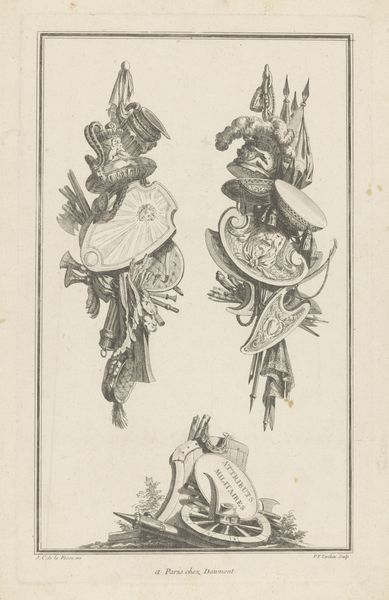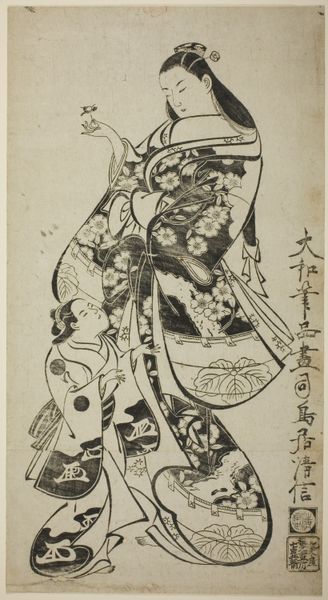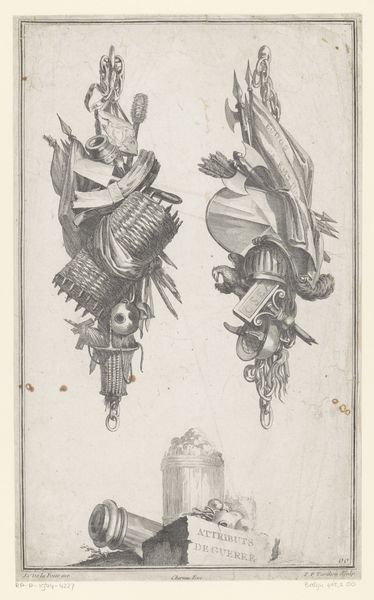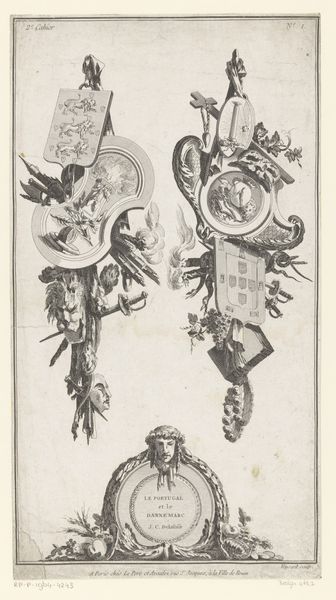
print, engraving
#
neoclacissism
#
allegory
# print
#
old engraving style
#
figuration
#
line
#
academic-art
#
engraving
Dimensions: height 356 mm, width 201 mm
Copyright: Rijks Museum: Open Domain
Editor: This is Etienne Claude Voysard’s "Afrika," an engraving from between 1772 and 1779. The composition feels so... theatrical, almost like stage props representing the continent. How do you interpret this work? Curator: This print provides insight into how Europe perceived and constructed its image of Africa during the late 18th century. It is full of neoclassical allegories. How do you think the print's imagery and symbolism participates in the public role of art in this historical context? Editor: It's like they’re trying to capture the “essence” of Africa through objects – statues, drums, even animal skins – all neatly arranged. It feels incredibly staged and, honestly, quite removed from any actual understanding. Curator: Precisely. The print is designed to visually communicate and reinforce existing narratives. The objects and their arrangement reflect European power dynamics and the control over visual representations of Africa. Notice how the imagery presents "Africa" as an aesthetic concept divorced from the realities of African societies. What do you think this reveals about the social and political use of imagery during this era? Editor: It's disturbing to realize how much these curated images shape perceptions. Were these types of images common? Did they have a tangible impact on how people viewed Africa at the time? Curator: Representations such as these circulated widely, shaping public understanding of Africa in ways that served European colonial interests. They contributed to the era’s intellectual and cultural justifications for the exploitation and subjugation of the continent. Editor: This artwork isn't just an image; it's a tool reflecting cultural attitudes. I’ll never see prints the same way again! Curator: And hopefully, we can carry that understanding forward to more critically examine how such representations operate today.
Comments
No comments
Be the first to comment and join the conversation on the ultimate creative platform.
